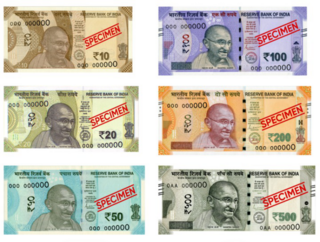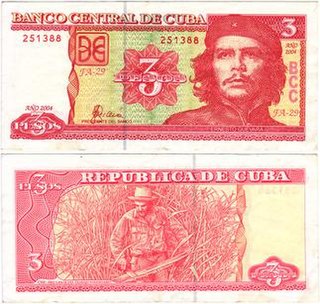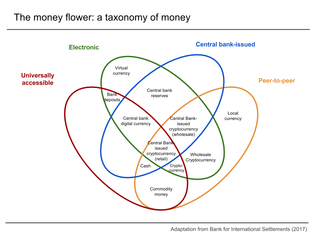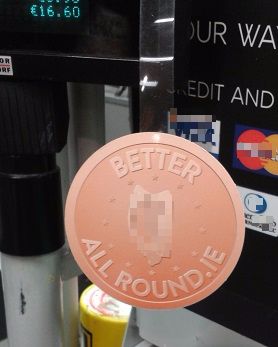Related Research Articles

The economy of Cuba is a mixed command economy dominated by state-run enterprises. Most of the labor force is employed by the state. In the 1990s, the ruling Communist Party of Cuba encouraged the formation of worker co-operatives and self-employment. In the late 2010s, private property and free-market rights along with foreign direct investment were granted by the 2018 Cuban constitution. Foreign direct investment in various Cuban economic sectors increased before 2018. As of 2000, public-sector employment was 76%, and private-sector employment was 23%, compared to the 1981 ratio of 91% to 8%. Investment is restricted and requires approval by the government. In 2019, Cuba ranked 70th out of 189 countries on the Human Development Index in the high human development category. As of 2012, the country's public debt comprised 35.3% of GDP, inflation (CDP) was 5.5%, and GDP growth was 3%. Housing and transportation costs are low. Cubans receive government-subsidized education, healthcare, and food subsidies.
A currency is a standardization of money in any form, in use or circulation as a medium of exchange, for example banknotes and coins. A more general definition is that a currency is a system of money in common use within a specific environment over time, especially for people in a nation state. Under this definition, the British Pound Sterling (£), euros (€), Japanese yen (¥), and U.S. dollars (US$) are examples of (government-issued) fiat currencies. Currencies may act as stores of value and be traded between nations in foreign exchange markets, which determine the relative values of the different currencies. Currencies in this sense are either chosen by users or decreed by governments, and each type has limited boundaries of acceptance; i.e., legal tender laws may require a particular unit of account for payments to government agencies.
The renminbi is the official currency of the People's Republic of China and one of the world's most traded currencies, ranking as the fifth most traded currency in the world as of April 2022.
The Australian dollar is the official currency and legal tender of Australia, including its external territories, Christmas Island, Cocos (Keeling) Islands and Norfolk Island, and three independent sovereign Pacific Island states: Kiribati, Nauru, and Tuvalu. Within Australia, it is almost always abbreviated with the dollar sign ($), with A$ or AU$ sometimes used to distinguish it from other dollar-denominated currencies. The $ symbol precedes the amount. It is subdivided into 100 cents.

The Mexican peso is the currency of Mexico. Modern peso and dollar currencies have a common origin in the 16th–19th century Spanish dollar, most continuing to use its sign, "$".
Legal tender is a form of money that courts of law are required to recognize as satisfactory payment for any monetary debt. Each jurisdiction determines what is legal tender, but essentially it is anything which when offered ("tendered") in payment of a debt extinguishes the debt. There is no obligation on the creditor to accept the tendered payment, but the act of tendering the payment in legal tender discharges the debt.

Sterling banknotes are the banknotes in circulation in the United Kingdom and its related territories, denominated in pounds sterling.
In macroeconomics, hard currency, safe-haven currency, or strong currency is any globally traded currency that serves as a reliable and stable store of value. Factors contributing to a currency's hard status might include the stability and reliability of the respective state's legal and bureaucratic institutions, level of corruption, long-term stability of its purchasing power, the associated country's political and fiscal condition and outlook, and the policy posture of the issuing central bank.

The peso is the currency of Argentina, identified by the symbol $ preceding the amount in the same way as many countries using peso or dollar currencies. It is subdivided into 100 centavos. Its ISO 4217 code is ARS.

The Indian rupee is the official currency in the Republic of India. The rupee is subdivided into 100 paise, though as of 2023, coins of denomination of 1 rupee are the lowest value in use whereas 2000 rupees is the highest. The issuance of the currency is controlled by the Reserve Bank of India. The Reserve Bank manages currency in India and derives its role in currency management on the basis of the Reserve Bank of India Act, 1934.

The Cuban peso also known as moneda nacional, is the official currency of Cuba.
The convertible peso was one of two official currencies in Cuba, the other being the Cuban peso. It had been in limited use since 1994, when its value was pegged 1:1 to the United States dollar.

Digital currency is any currency, money, or money-like asset that is primarily managed, stored or exchanged on digital computer systems, especially over the internet. Types of digital currencies include cryptocurrency, virtual currency and central bank digital currency. Digital currency may be recorded on a distributed database on the internet, a centralized electronic computer database owned by a company or bank, within digital files or even on a stored-value card.
Peso dominicano has been the name of the currency of the Dominican Republic since 2011. Its symbol is "$", with "RD$" used when distinction from other pesos is required; its ISO 4217 code is "DOP". Each peso is divided into 100 centavos ("cents"), for which the ¢ symbol is used. With exception of the United States dollar, it is the only currency that is legal tender in the Dominican Republic for all monetary transactions, whether public or private.

Cash rounding or Swedish rounding occurs when the minimum unit of account is smaller than the lowest physical denomination of currency. The amount payable for a cash transaction is rounded to the nearest multiple of the minimum currency unit available, whereas transactions paid in other ways are not rounded. Cash rounding typically occurs when low-denomination coins are removed from circulation owing to inflation. Cash rounding may be a compulsory legal requirement if such coins are no longer legal tender, or a voluntary practice where they remain in circulation but are scarce or impractical.

The United States dollar is the official currency of the United States and several other countries. The Coinage Act of 1792 introduced the U.S. dollar at par with the Spanish silver dollar, divided it into 100 cents, and authorized the minting of coins denominated in dollars and cents. U.S. banknotes are issued in the form of Federal Reserve Notes, popularly called greenbacks due to their predominantly green color.

The international status and usage of the euro has grown since its launch in 1999. When the euro formally replaced 12 currencies on 1 January 2002, it inherited their use in territories such as Montenegro and replaced minor currencies tied to the pre-euro currencies, such as in Monaco. Four small states have been given a formal right to use the euro, and to mint their own coins, but all other usage outside the eurozone has been unofficial. With or without an agreement, these countries, unlike those in the eurozone, do not participate in the European Central Bank or the Eurogroup.

The dollarization of Cuba refer to macroeconomic policies implemented with the aim at stabilising the Cuban economy after 1993. They were initially enacted to offset the economic imbalances which was a result of the dissolution of the Soviet Union in 1991. The main aspect of these reforms was to legalize the then illegal U.S. Dollar and regulate its usage in the island's economy.

The dual economy of Cuba was developed after the dissolution of the Soviet Union, which caused major economic changes on the island. Tourism was regarded as the only stable sector of the Cuban economy and became the subject of policy changes to enhance its development. Cuba legalized the use of the US dollar and created a dual currency system, one based on the dollar and the Cuban convertible peso with the other system based on the Cuban peso. Different institutions and businesses operated only one side of the currency divide. The Cuban peso, used mostly by Cuban nationals, could not buy imported goods. The goal of the dual economy was to create one economic sphere designed to use foreign investment, while keeping it separate from the other economic sphere of domestic activities.
References
- ↑ "Cuba bans US dollar transactions". BBC News . 26 October 2004. Retrieved 8 September 2013.
- ↑ "Cuba dollar tax comes into force". BBC News . 15 November 2004. Retrieved 8 September 2013.